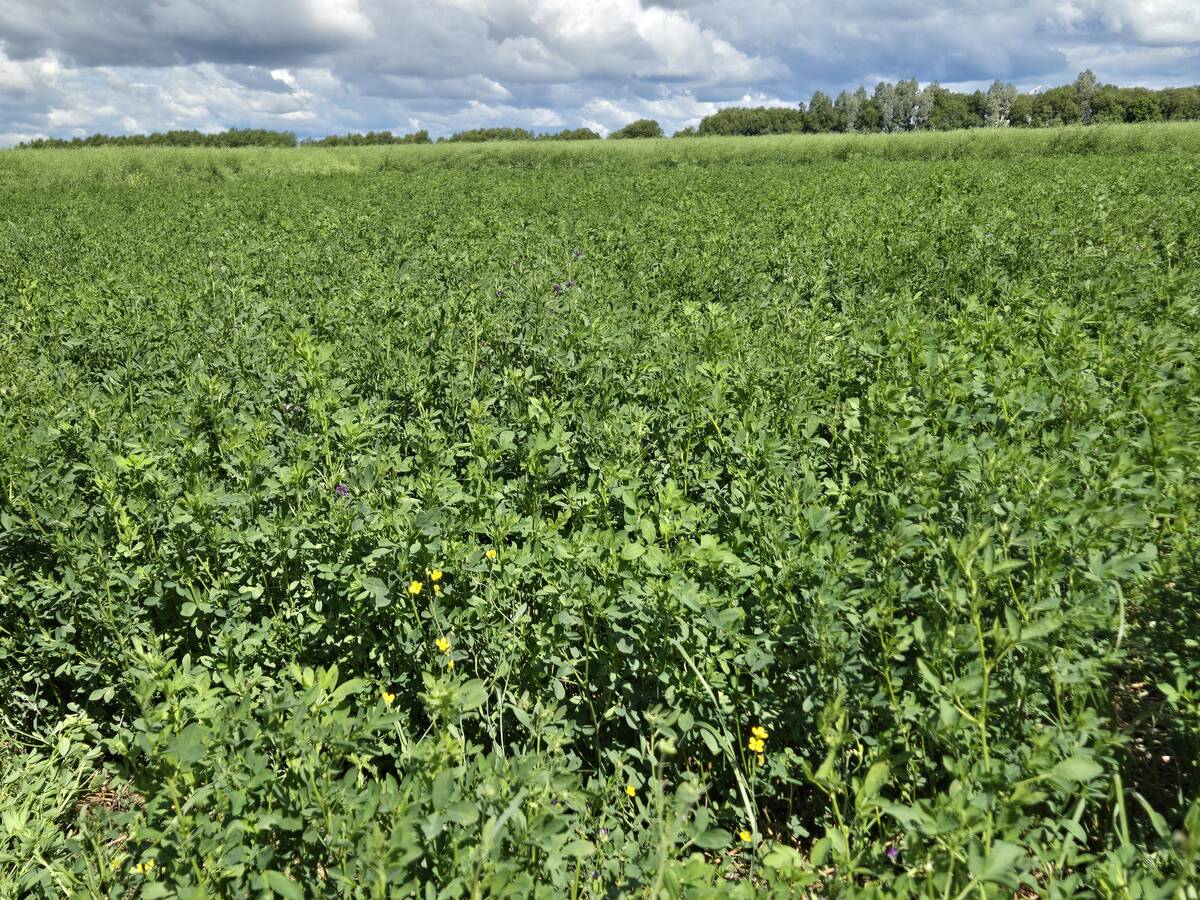MORINVILLE, Alta. – Charles Hepfner’s drought-inspired brain wave is
making him money this autumn.
It is also turning heads on the roads around his 1,300 acre farm north
of Edmonton.
“I’ve almost caused accidents,” he said with a laugh. “When people see
it, they can’t believe it. They are slowing down, pulling over just to
watch it work.”
“It” is a custom-built contraption that features a combine on the front
and a baler on the back.
Read Also

Manitoba Parkland research station grapples with dry year
Drought conditions in northwestern Manitoba have forced researchers at the Parkland Crop Diversification Foundation to terminate some projects and reseed others.
Hepfner has averaged 25 to 30 bales per acre as he harvests 850 acres
of peas, barley, wheat and oats. With bales selling for up to $3 each,
he figures they will bring in $50,000 or more. He plans to sell the
canola straw from his last 500 acres of harvest for bedding.
“The revenue from that straw will just about make up for what I’m
losing with the crops. I think we’ll only be getting about half a crop
this year.”
It’s not a bad return from a machine that did not exist a few months
ago.
The genesis of the combine-baler – a combaler, perhaps – came last
summer as Hepfner surveyed his stunted crops and realized the straw
would be too short to be effectively gathered, even though straw would
be a lucrative commodity this year.
Hepfner’s inner inventor began to muse. Why not build a
drought-friendly combine with a baler attached so the post-harvest
residue never hit the ground? Could it be done?
He first thought of trying to attach a round baler, but abandoned the
idea.
He then bought a square baler from a neighbour and set to work.
There were obvious challenges.
How could it be attached to allow it to turn sharp corners? How would
the straw get from the combine to the baler without hitting the ground
where chaff and some of the straw would be lost?
A lot of tinkering, some ingenuity and a bit of trial and error – a
drawbar here, a conveyer belt there – and the machine was ready for a
test run.
The first challenge was 200 acres of peas. A neighbour had tried to
bale the short pea stalks and left most of it lying on the ground.
Hepfner’s machine worked its way through the peas, dropping 30 bales to
the acre in neat rows behind.
“It worked like a charm,” he said. Neighbours were coming to look and
quickly let him know they would buy the feed for their livestock.
“It is a rare time that something proves itself so quickly,” he said.
“It might not be necessary in a good crop year but with a short crop,
it works very well.”
So will he patent the idea?
“No. I think if other farmers want to build something like this, they
should be able to without paying me money.”
















